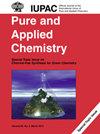糖尿病伤口生物膜相关感染的管理--从工作台到床边
IF 2
4区 化学
Q3 CHEMISTRY, MULTIDISCIPLINARY
引用次数: 0
摘要
生物膜是嵌入细胞外基质中的复杂细菌菌落。它们是伤口愈合的主要障碍,在慢性伤口中尤为明显。它保护细菌免受宿主免疫系统和传统抗生素治疗的伤害。生物膜的保护基质会阻止必需的营养物质和氧气扩散到周围的健康组织中。此外,生活在生物膜中的微生物自然会增加对抗生素的抗药性,从而降低传统疗法的效果。因此,生物膜成为持久的感染源,进一步破坏了伤口愈合的正常过程。本综述全面讨论了目前用于伤口愈合以对抗生物膜的配方策略,如水凝胶、聚合物纳米粒子和纳米纤维。这些制剂经过精心设计和开发,可以扰乱生物膜基质,阻止微生物生长,提高抗菌剂和抗生素的效力。对现有制剂策略的作用机制、优势和局限性进行了综述。本文还讨论了已转化为临床应用并获得专利的制剂策略。本文章由计算机程序翻译,如有差异,请以英文原文为准。
Management of biofilm-associated infections in diabetic wounds – from bench to bedside
Biofilms are complex bacterial colonies embedded in an extracellular matrix. These pose a major obstacle to wound healing and are noticeable in chronic wounds. It protects the bacteria from the host’s immune system and conventional antibiotic treatments. The biofilm’s protective matrix prevents essential nutrients and oxygen from diffusing into the surrounding healthy tissue. In addition, microbes living in biofilms naturally have increased resistance to antibiotics, which reduces the effectiveness of traditional therapies. As such, biofilms serve as persistent reservoirs of infection, which further disrupts the normal course of wound healing. In this review, the current formulation strategies such as hydrogels, polymeric nanoparticles, and nanofibers that are used in wound healing to counteract biofilms have been comprehensively discussed. The formulations have been meticulously designed and developed to disturb the biofilm matrix, prevent the growth of microorganisms, and increase the potency of antimicrobials and antibiotics. The mechanism of action, advantages and limitations associated with the existing formulation strategies have been reviewed. The formulation strategies that have been translated into clinical applications and patented are also discussed in this paper.
求助全文
通过发布文献求助,成功后即可免费获取论文全文。
去求助
来源期刊

Pure and Applied Chemistry
化学-化学综合
CiteScore
4.00
自引率
0.00%
发文量
60
审稿时长
3-8 weeks
期刊介绍:
Pure and Applied Chemistry is the official monthly Journal of IUPAC, with responsibility for publishing works arising from those international scientific events and projects that are sponsored and undertaken by the Union. The policy is to publish highly topical and credible works at the forefront of all aspects of pure and applied chemistry, and the attendant goal is to promote widespread acceptance of the Journal as an authoritative and indispensable holding in academic and institutional libraries.
 求助内容:
求助内容: 应助结果提醒方式:
应助结果提醒方式:


